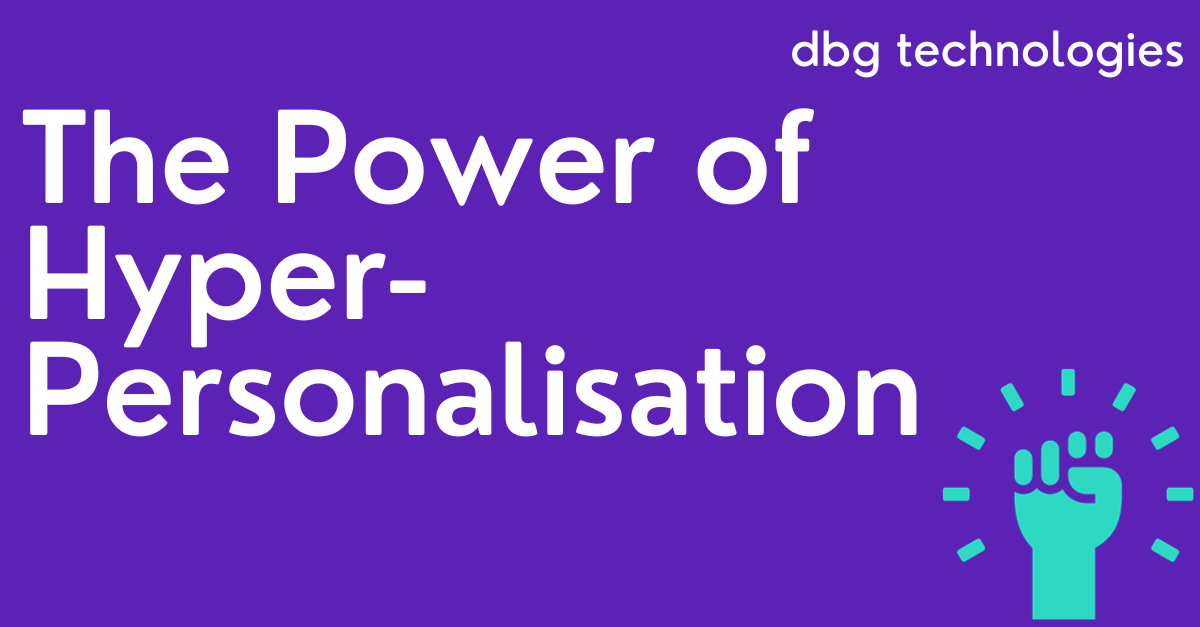 In today’s fast-paced digital world, the eCommerce landscape is constantly evolving. To stay ahead of the game and meet the ever-growing expectations of customers, businesses must embrace innovative strategies.
In today’s fast-paced digital world, the eCommerce landscape is constantly evolving. To stay ahead of the game and meet the ever-growing expectations of customers, businesses must embrace innovative strategies.
One such strategy that’s making waves in the eCommerce industry is hyper-personalisation, which is not just a buzzword; it’s a game-changer in eCommerce. It goes beyond traditional personalisation tactics, such as using a customer’s name in emails or recommending products based on browsing history. Hyper-personalisation involves tailoring every aspect of the customer experience to individual preferences and behaviours.
Imagine a shopping experience where each customer is treated as a unique entity with distinct needs, preferences, and tastes. Hyper-personalisation leverages data-driven insights, artificial intelligence, and machine learning to create highly individualized experiences. It takes into account a wide range of factors, including past purchase history, online behaviour, demographics, location, and even real-time interactions.
Why Hyper-Personalisation Matters:
Enhanced Customer Engagement: Hyper-personalisation fosters a deeper connection between customers and your brand. When customers feel understood and valued, they are more likely to engage with your eCommerce store, spend more time browsing, and return for future purchases.
Increased Conversion Rates: By tailoring product recommendations and content to each customer’s interests and needs, you can significantly boost conversion rates. When customers see products that resonate with them, they are more likely to make a purchase.
Improved Customer Loyalty: Personalised experiences build trust and loyalty. When customers receive relevant recommendations and special offers, they are more likely to become repeat buyers and brand advocates.
Reduced Cart Abandonment: Hyper-personalisation can help address one of the biggest challenges in eCommerce—cart abandonment. By understanding why a customer added items to their cart and offering incentives or reminders, you can reduce abandoned carts and recover lost sales.
Optimised Marketing Spend: When you target your marketing efforts with precision, you can allocate your budget more effectively. Hyper-personalisation helps you avoid wasting resources on generic campaigns that may not resonate with your audience.
How to Implement Hyper-Personalisation in eCommerce
Data Collection: Start by collecting and analysing customer data. This includes purchase history, browsing behaviour, demographic information, and any other relevant data points.
Segmentation: Divide your customer base into segments based on common characteristics and behaviours. This segmentation will be the foundation of your personalised marketing efforts.
Personalised Product Recommendations: Implement AI-driven recommendation engines that suggest products based on individual preferences. These recommendations can be displayed on your website, in email campaigns, and during the checkout process.
Dynamic Content: Customise website content, email newsletters, and product descriptions based on the customer’s profile and behaviour. This can include personalised greetings, content, and product descriptions.
Real-Time Personalisation: Use real-time data to deliver personalised experiences as customers interact with your site. For example, display relevant upsell or cross-sell offers during the checkout process.
A/B Testing: Continuously test and refine your personalisation strategies to ensure they are delivering the desired results.
In the competitive world of eCommerce, hyper-personalisation is a game-changing strategy that can set your business apart from the rest. By harnessing the power of data and AI-driven technology, you can create highly individualised experiences that delight your customers, boost conversions, and drive revenue growth. If you haven’t already embraced hyper-personalisation, now is the time to start… the future of eCommerce is personal.
